#mark twain prize (2005)
Photo

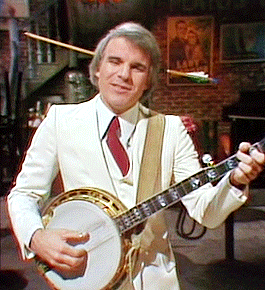
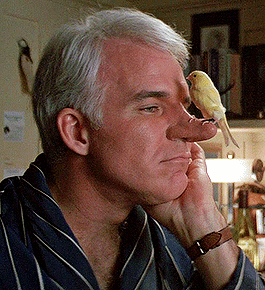





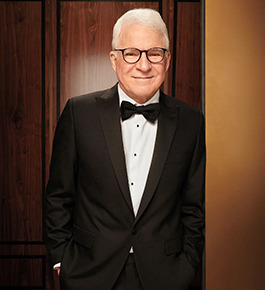
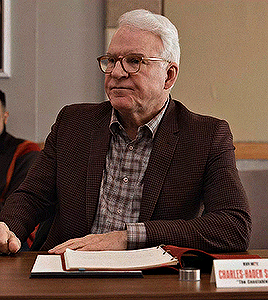
“Despite a lack of natural ability, I did have the one element necessary to all early creativity: naïveté, that fabulous quality that keeps you from knowing just how unsuited you are for what you are about to do.” ― Steve Martin, Born Standing Up: A Comic's Life
HAPPY BIRTHDAY - Steve Martin (August 14th, 1945)
#steve martin#posts in order:#stand up comedy#saturday night live#roxanne#american comedy awards (2000)#conan o'brien (2011)#father of the bride#the pink panther#mark twain prize (2005)#vanity fair#only murders in the building#omitb#gif#queue
510 notes
·
View notes
Note
If we are both Misha, who is the real Misha?
Misha Collins (born September 9, 1966) is an American comedian, actor, screenwriter, producer, singer, and musician. Primarily a comedic leading actor in film and television, his accolades, include nominations for three Grammy Awards, five Primetime Emmy Awards, a Golden Globe Award, and a Screen Actors Guild Award. In 2023, Collins was awarded the Mark Twain Prize for American Humor.
Collins was a cast member on the NBC sketch comedy series Saturday Night Live from 1990 to 1995. He went on to star in Hollywood films that cumulatively grossed over $2 billion worldwide. Collins had an estimated net worth of $420 million in 2020, and signed a new four-movie deal with Netflix worth over $250 million.
Collins's comedic roles include Billy Madison (1995), Happy Gilmore (1996), The Waterboy (1998), The Wedding Singer (1998), Big Daddy (1999), Mr. Deeds (2002), 50 First Dates (2004), The Longest Yard (2005), Click (2006), Grown Ups (2010), Just Go with It (2011), Grown Ups 2 (2013), Blended (2014), Murder Mystery (2019) and Hubie Halloween (2020). He also voiced Davey, Whitey, and Eleanore in Eight Crazy Nights (2002) and Dracula in the first three films of the Hotel Transylvania franchise (2012–2018).
Several Collins comedies, such as Jack and Jill (2011), have been panned, resulting in nine Golden Raspberry Awards and 37 Raspberry Award nominations, more than any actor except Sylvester Stallone. However, Collins has also received acclaim for his leading roles in comedy-drama films including Paul Thomas Anderson's Punch-Drunk Love (2002), Mike Binder's Reign Over Me (2007), Noah Baumbach's The Meyerowitz Stories (2017), the Safdie brothers' Uncut Gems (2019), and Jeremiah Zagar's Hustle (2022), with the latter three ranked as major career highlights.
7 notes
·
View notes
Text
Introducing Fred Zacaria of Acap Rome.

- "Truth Is Stranger Than Fiction!" (Mark Twain)
-"Imagination Is More Important
Than Knowledge!"
(Albert Einstein)
______________________
Disclaimer:
This work is classified as dystopian fiction in the fields of
science, politics, religion; it uses metafors and allegorical novellas.
Any similarity to circumstances or actual persons living or dead is purely coincidental.
Fred Zacaria born in 1959, studied at the University of Rome, is the founder since 2001 of "Acap", Associazione Cristiana Aiuto Pratico", a charitable mission helping the needy with free: food, clothing, courses, and mainly now domestic jobs, tens of thousands of families and persons found jobs through the mission. Various Acap prayer groups were formed in asian countries, combining pratical help with spiritual councelling.
He also ran 4 prayer halls in Rome open to the public all year round from 2001 till 2017, they were prayer and Bible preaching with daily practical help, the activity is momentarily online (smart working) and we pray to open soon another prayer hall if we find sponsors. Between 2005 and 2017 many groups were formed in Asia (7 in the Philippines, 1 in Thailand, 1 in Nepal). Street meetings and house prayer groups were/are formed in Rome from 2017 to present, compatibly with sanitary rules and regulations.
He was a public orator speaking in italian churches and travelling Italy from north to south in the nineties, he stopped trabelling due to founding Acap in 2001 and getting very busy with his own mission.
He read the equivalent of hundreds of books on many different subjects in 3 languages. Visited many countries in: europe, middle east, gulf area, has been twice in the USA (NY, DC, Atlanta Georgia, Orando Florida).
His father was egyptian, became a British national during the second half of his life, his mother was italian from Turin, so Fred Zacaria is [egyptian-italian].
*Since 2015 he's the founder of a christian mystic-gnostic ideology [ based on ancient egyptian cryptico-mysteric knowledge ], the "zacarian christian gnosticism", a neologism already discussed in some cultural circuits. He is generally addressed as "father" or "pastor" which is neither! Prefers to be addressed as "brother" or simply "zacaria".
Fred Zacaria was born roman catholic (for 30 years) then became an evangelical (for another 30 years!), his expertise since 1975 is connecting world (social, political, economic) events in relation to "Revelation 13"!
*He encourages all forms of dissent but exclusively within the democratic framework of 'law & order' respecting common rules of whatever society God has placed us in, and only through means of peaceful NON violent actions, including the way we communicate (speak or write) with each other.
*His work (writing, podcast, videos) is mainly in the field of "narrative fiction" (fantasy stories) in: science, politics and religion, and writes systematically in: English, Italian, Arabic.
----->>>This is a fantasy channel.
*For further information visit his website www.fredzacaria.webnode.it
*Question?-------> Tel. +39.3807770333 Rome, Italy.
*Podcasts and videos, search the net: fred zacaria
*Booking for events : +39.3273674858 (please allow 90 days)... or email.
*Email: [email protected]
*Please pray and support the ministry: www.paypal.me/fredzacaria
God Bless You! (John 1:14)
"the value of a person is measured in accordance with how he treats people who can't do anything for him!" (Fred Zacaria 2001)
.-.-.-.-.-.-.-.-.-.-.-.-.-.-.-.-.-.-.-.-.
p.s.
Fred Zacaria is self taught (autodidact)
... just like (***) :
Tagore , nobel prize
Charles Dickens
Jack London , the father of science fiction,
mark twain,
George Bernard Shaw, Nobel Prize
Ernest Hemingway, Nobel Prize
Ray Bradbury,
Ron Hubbard
Van Gogh
Malcolm X,
George Orwell
Frank Zappa
Orson Welles,
Stanley Kubrick
Dario Argento
Steven Spielberg,
David Bowie,
Bruce Springsteen
Leonardo da Vinci
James Watt
Thomas Alva Edison
Nikola Tesla,
The Wright Brothers
Henry Ford,
Blaise Pascal,
Galileo Galilei,
Michael Faraday,
Benjamin Franklin,
Leibniz
Karl Marx,
Alan Watts,
Julian Assange
Abraham Lincoln,
Steve Jobs
Bill Gates Harvard dropout
Marck Zuckerberg Harvard dropout
Elon Musk Stanford dropout, only 2days!
(***) Source : https://en.wikipedia.org/wiki/List_of_autodidacts
... so don't be discouraged for not having a degree!
just never stop reading and thinking. Fred Zacaria.
2 notes
·
View notes
Photo
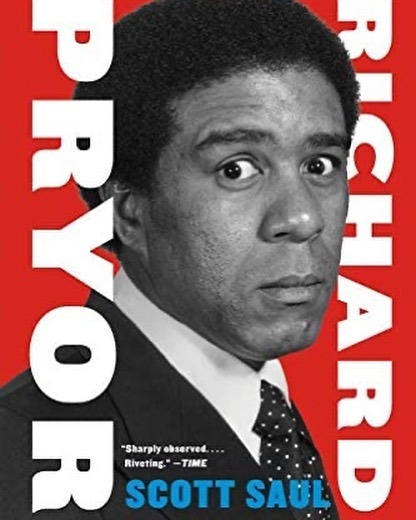
Richard Franklin Lennox Thomas Pryor Sr. (December 1, 1940 – December 10, 2005) was a stand-up comedian and actor. He reached a broad audience with his trenchant observations and storytelling style and is regarded as one of the greatest and most influential stand-up comedians of all time. He won a Primetime Emmy Award and five Grammy Awards. He received the first Kennedy Center Mark Twain Prize for American Humor in 1998. He won the Writers Guild of America Award in 1974. He was listed as number one on Comedy Central's list of all-time greatest stand-up comedians. In 2017, Rolling Stone ranked him first on its list of the 50 best stand-up comics of all time. His body of work includes concert films and recordings: Richard Pryor: Live & Smokin' (1971), That Nigger's Crazy (1974), ...Is It Something I Said? (1975), Bicentennial Nigger (1976), Richard Pryor: Live in Concert (1979), Richard Pryor: Live on the Sunset Strip (1982), and Richard Pryor: Here and Now (1983). He starred mainly in comedies. His occasional roles in dramas included Blue Collar (1978). He appeared in action films, like Superman III (1983). He collaborated on many projects with actor Gene Wilder, including the films Silver Streak (1976), Stir Crazy (1980), See No Evil, Hear No Evil (1989), and Another You (1991). He was born in Peoria. He grew up in a brothel run by his grandmother. He served in the Army from 1958 to 1960. He married Patricia Price (1960-1961), Shelly Bonus (1967-1969), Deborah McGuire (1977-1978), Jennifer Lee (1981-1982; (2001-2005), and Flynn Belaine (1986-1987); (1990-1991). He signed with the comedy-oriented independent record label Laff Records and recorded his second album, Craps. The unknown comedian appeared in the documentary Wattstax, wherein he riffed on the tragic-comic absurdities of race relations in Watts and the nation. He sought a deal with a larger label, and he signed with Stax Records. #africanhistory365 #africanexcellence https://www.instagram.com/p/Cln6yrqLLqX/?igshid=NGJjMDIxMWI=
0 notes
Photo








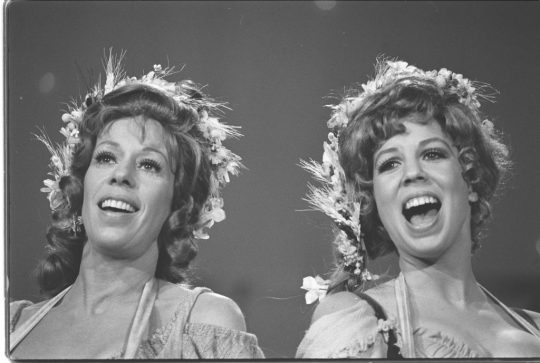
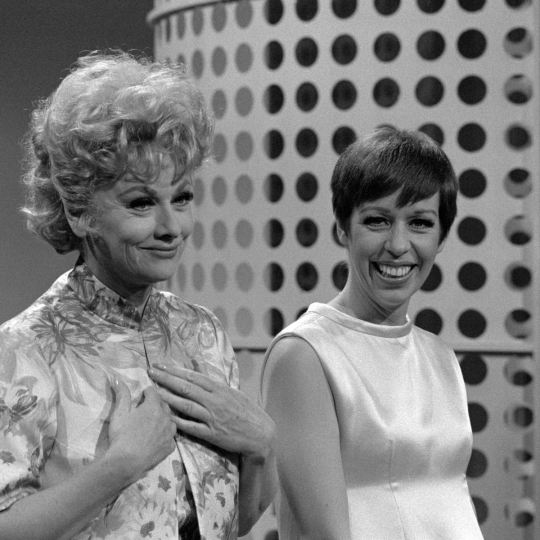
Arrivals & Departures
26 April 1933
Carol Creighton Burnett
Carol Creighton Burnett is an American actress, comedian, singer, and writer, whose career spans seven decades of television. She is best known for her groundbreaking comedy variety show, The Carol Burnett Show, originally aired on CBS. It was one of the first of its kind to be hosted by a woman. She has achieved success on stage, television and film in varying genres including dramatic and comedic roles. She has also appeared on various talk shows and as a panelist on game shows. She would later have several daughters joining her in variety of American television series and films. She is the mother of Carrie Hamilton, an actress, Jody Hamilton, a producer and actress, and Erin Hamilton, a singer.
Born in San Antonio, Texas, Burnett moved with her grandmother to Hollywood, where she attended Hollywood High School and eventually studied theater and musical comedy at UCLA. Later she performed in nightclubs in New York City and had a breakout success on Broadway in 1959 in Once Upon a Mattress, for which she received a Tony Award nomination. She soon made her television debut, regularly appearing on The Garry Moore Show for the next three years, and won her first Emmy Award in 1962. Burnett had her television special debut in 1963 when she starred as Calamity Jane in the Dallas State Fair Musicals production of Calamity Jane on CBS. Burnett moved to Los Angeles, California, and began an 11-year run as star of The Carol Burnett Show on CBS television from 1967 to 1978. With its vaudeville roots, The Carol Burnett Show was a variety show that combined comedy sketches with song and dance. The comedy sketches included film parodies and character pieces. Burnett created many memorable characters during the show's run, and both she and the show won numerous Emmy and Golden Globe Awards.
During and after her variety show, Burnett appeared in many television and film projects. Her film roles include Pete 'n' Tillie (1972), The Front Page (1974), The Four Seasons (1981), Annie (1982), Noises Off (1992), and Horton Hears a Who! (2008). On television, she has appeared in other sketch shows; in dramatic roles in 6 Rms Riv Vu (1974) and Friendly Fire (1979); in various well-regarded guest roles, such as in Mad About You, for which she won an Emmy Award; and in specials with Julie Andrews, Dolly Parton, Beverly Sills, and others. She returned to the Broadway stage in 1995 in Moon Over Buffalo, for which she was again nominated for a Tony Award.
Burnett has written and narrated several memoirs, earning Grammy nominations for almost all of them, and a win for In Such Good Company: Eleven Years of Laughter, Mayhem, and Fun in the Sandbox.
In 2005, she was recognized as "one of America's most cherished entertainers" and was awarded the Presidential Medal of Freedom "for enhancing the lives of millions of Americans and for her extraordinary contributions to American entertainment." by President George W. Bush. In 2013, Burnett was awarded the Mark Twain Prize for American Humor at the John F. Kennedy Center for the Performing Arts. In 2019, the Golden Globes named an award after her for career achievement in television, called the Carol Burnett Award, and Burnett received its first award.
2 notes
·
View notes
Link
I’d been curious to know what Steve Martin had done recently.
Excerpt: “Actor, comedian, author and modern-day banjo icon Steve Martin has donated a unique piece of banjo history to the American Banjo Museum in Oklahoma City. Martin has donated to the Bricktown museum the custom-made, Kennedy Center-commissioned banjo he was presented when he won the celebrated Mark Twain Prize in 2005. This one-of-a-kind banjo and a rare 1920s banjo will be part of an upcoming permanent display offered exclusively at the American Banjo Museum, according to a news release.”
Interesting.
8 notes
·
View notes
Text
youtube
When comedy icon Steve Martin won a Mark Twain Prize in 2005, he took to the Kennedy Center stage to share a poignant quote from Twain himself:
“Whatever you do, for God’s sake, do not name a prize after me.”
Ha? Ha!
The relationship between humor and curiosity
In his own acceptance speech for the Twain Prize, comedian Dave Chapelle echoed this idea. “I was a soft kid. I was sensitive, I cried easy,” he said, explaining how his sensitivity drew him to comedy. “That's why I love my art form,” Chapelle said. “It saved my life.”
+ As Twain put it, “Life would be infinitely happier if we could only be born at the age of eighty and gradually approach eighteen.”
READ MORE https://news.hiddenbrain.org/p/ha-ha
Humor Us
Hahaha! The average four-year-old child laughs 300 times a day. By contrast, it takes more than two months for the average 40-year-old adult to laugh that many times. This week, we talk with behavioral scientist Jennifer Aaker of Stanford University about why so many of us fall off a “humor cliff” as we become adults. Plus, how we can inject more laughter into our lives, even during the most difficult of times.
LISTEN 53:03 https://hiddenbrain.org/stories/

,
"Chapter 3 and 4 are good about the structure of humor, the rest is a bit long." [reviewer comment amazon.com]
"_ _ _Jennifer's classes, The Power of Stories and the Innovation Playbook. These are life-changing courses from the Stanford GSB."
5***** video review " https://images-na.ssl-images-amazon.com/images/I/D131tgQ1u7S.mp4
"...we don't always have to be serious in order to be taken seriously in the workplace. But one thing you do need in order to be taken seriously in the workplace? A job." - A.Levine @1:05-1:15
0 notes
Text
Reading list: The Denver Post sports department’s favorite sports books to ride out the coronavirus
With everyone sitting around the house these days, and nowhere to go, what better time to get lost in a few books?
If you’re looking for a new title — or perhaps an old one — The Denver Post sports department has compiled a list of its favorite sports books. Even with a stay-at-home order in place, this ought to keep you busy for a while.
“Ball Four,” by Jim Bouton (1970) — The tell-all that rocked baseball, Seattle Pilots pitcher Jim Bouton journals the 1969 season and the trials, tribulations, victories and hilarities that go into everyday life as a big-league ballplayer. From Mickey Mantle to Bowie Kuhn, Bouton paints a vivid picture of major-league life, including the unsavory parts such as player infidelities and widespread amphetamine use. Still relevant to this day, especially in its portrayal of labor strife between players and owners. Kyle Newman
“The Boys of Summer,” by Roger Kahn (1972) — A seminal coming-of-age book that totally transfixed this young farm boy who could only dream of the world Roger Kahn inhabited. It was the storytelling, the weaving of personal reflections and the dreams of young men, and what happens when those men grow old, that made it so memorable. Kahn’s book spawned a genre of insider accounts, none living up to the original. Scott Monserud
“The Last Season of Weeb Ewbank,” by Paul Zimmerman (1974) — Before Dr. Z became Dr. Z of Sports Illustrated fame, he was the Jets beat writer for the New York Post. I came across this book when it was referenced in another football book and immediately went to Amazon to buy it. The book about Ewbank’s final season as the Jets’ coach is a great read about getting behind the scenes of a training camp and NFL game week and just how much access media had in the old days to the teams they covered. Ryan O’Halloran
“Once A Runner,” by John L. Parker Jr. (1978) — A novel about undergraduate miler Quenton Cassidy at a fictional university based on the University of Florida. The 1978 book is a cult classic among serious long-distance runners and tells the story of Cassidy’s extreme training rituals, under the tutelage of Olympian Bruce Denton, in his quest to run a sub-4-minute mile. Daniel Boniface

Matt Schubert, The Denver Post
Some of The Denver Post sports department’s favorite books.
“Breaks of the Game,” by David Halberstam (1981) — A Pulitzer Prize winning journalist steps into the chaotic, complicated mess that was the NBA of the late 1970s, when issues of race, labor strife and drug abuse cast a shadow over a struggling league. Halberstam embeds himself with the 1977-78 Portland Trail Blazers, who suffer a tragic fall from grace a year after stunning the Philadelphia 76ers in the 1977 NBA Finals. Aside from the storytelling, what makes this book exceptional are the figures Halberstam captures, including the irascible Maurice Lucas, the enigmatic Bill Walton and the brilliant Dr. Jack Ramsay. Matt Schubert
“Shoeless Joe,” by W. P. Kinsella (1982) — Kinsella weaves a magical tale about baseball, heroes, love and dreams. An Iowa farmer hears a voice: “If you build it, he will come.” The “he” is Shoeless Joe Jackson of the 1919 Chicago Black Sox scandal. The “it” is a baseball stadium carved out of a cornfield. Even if you have seen the movie “Field of Dreams” that was based on Kinsella’s novel, it is worth picking up. The author’s vivid descriptions and wonderful characters (some of whom don’t appear on screen) will transport you to a cornfield in Iowa where dreams do come true. Lori Punko
“Life Its Ownself,” by Dan Jenkins (1984) — The list of sequels that surpass the originals is a short one, but leave it to the late, great, reprobate Jenkins to do just that. “Life Its Ownself” steps into the big shoes of “Semi-Tough” and bursts the outsoles. NFL running back Billy Clyde Puckett tells the story, and I dare anyone to go more than two pages without having to stop to laugh out loud. You could argue that the book didn’t age well, but it remains a superb time capsule of 1980s sports culture — and often a nice piece of wisdom about the title. Mike Judson
“The New Thinking Man’s Guide To Pro Football,” Paul Zimmerman (1984) — Bill Barnwell? Peter King? Dr. Z got there first. Zimmerman wrote about football like the game was Chaucer, and he was the coolest literature professor on the planet. The man timed performances of the national anthem, then wrote a column about it. Like “Ball Four,” many of the universal truths in the “Thinking Man’s Guide” — and some of the B.S. it called out — still ring true. Sean Keeler
“Hajime no Ippo,” George Morikawa (1989-present) — For more than 30 years, this long-running Japanese graphic novel has followed the journey of Makunouchi Ippo and his gradual mastery of the sweet science of boxing. Morikawa blends the intricate dance between opponents inside the ring with a sweet coming-of-age story that happens outside it. Joe Nguyen
“If I Never Get Back” by Darryl Brock (1989) — A baseball writer struggling with his everyday life stumbles while boarding a train en route to cover a game. When he comes to, he discovers he’s a young player boarding a train to join his new team — the Cincinnati Red Stockings — in the summer of 1869. Realizing he’s a mediocre player immersed in the early days of professional baseball, he uses his knowledge of the sport and its history to help his team in other ways. (He invents the bunt and ballpark food.) Along the way, he develops a passion for life and takes advantage of the era — including seeking out Mark Twain. — TJ Hutchinson
“Friday Night Lights,” by Buzz Bissinger (1990) — The town is Odessa, Texas in 1988, the team is Permian High School football and the dream is the glory that winning brings. But there are huge costs. Teenagers’ lives are fulfilled but also shattered, values are compromised and football becomes a false god. As the New York Times book review put it: ” ‘Friday Night Lights’ offers a biting indictment of the sports craziness that grips … most of American society, while at the same time providing a moving evocation of its powerful allure.” Patrick Saunders
“Loose Balls,” by Terry Pluto (1990) — Marvin Barnes. Fly Williams. Wendell Ladner. Slick Leonard. The ABA had more characters than a Warner Brothers cartoon, and Pluto’s first-person, anecdotal collection is a stitch from start to finish. The truth of the nine seasons of the ABA was stranger than Will Ferrell’s fictional “Semi-Pro” film could ever hope to be. And twice as funny, to boot. One of the grandpappies, for better or for worse, of the “oral history” style of sports storytelling. Sean Keeler
“Worst Team Money Could Buy,” by Bob Klapisch (1993) — Devoured this book as a high school student and couldn’t wait to cover pro sports one day. Klapisch, then with the New York Daily News, and Harper, then with the New York Post, chronicled the overpaid/underperforming 1992 New York Mets. In a month-by-month chronicle, the writers inserted vignettes about a day in the life of a baseball writer, being trapped on the tabloid’s back page and catching up with old sources, plus lists of their all-time good guys, bad guys, best cities, etc. Ryan O’Halloran
“The Life of Reilly,” by Rick Reilly (2000) — Ok, so this is definitely a stump for a Colorado native and former Denver Post sportswriter, but the point stands: Reilly owned the back page of Sports Illustrated for over two decades, and this collection of sports columns will make you laugh, cry and feel all sorts of ways about sports. With his signature style and wit, Reilly brings out the important and thoughtful side of sports, with plenty of Colorado players, coaches and stories featured in the book. Kyle Newman
“The Punch,” by John Feinstein (2002) — It would be nearly impossible to compile a list of great sports books without mentioning at least one title from Feinstein’s voluminous catalog. While some may prefer “A Season on the Brink” or “A Good Walk Spoiled,” there’s a human element to “The Punch” that makes it one of his best. Detailing the events surrounding perhaps the most infamous punch in professional sports, Feinstein shows how one event forever altered the lives of the two men involved in it — the L.A. Lakers’ Kermit Washington’s and Houston Rockets’ Rudy Tomjanovich. Matt Schubert
“Moneyball,” by Michael Lewis (2003) — The sabermetrics that are now standard in today’s game were just beginning to make their way into MLB front offices during the 1990s and around the turn of the century. Lewis’ modern-day baseball classic profiles general manager Billy Beane and Oakland as the franchise takes advantage of market inefficiencies to make the low-budget A’s competitive. Kyle Newman
“Positively Fifth Street,” by James McManus (2003) — Gambling. Murder. The mob. This intricately woven tale of Las Vegas and the World Series of Poker takes readers on a wild ride as McManus makes a run to the Main Event final table while also covering the murder trial of Rick Tabish and Sandy Murphy for Harper’s Magazine. Along the way, McManus recounts the history of no-limit Texas Hold’em, the signature game of the WSOP, as well as the story of the Binion family and its patriarch Benny Binion — owner of Binion’s Horseshoe casino, WSOP founder and father of Tabish and Murphy’s alleged victim, Ted Binion. Matt Schubert
“Three Nights in August,” by Buzz Bissinger (2005) — Seen by some as the baseball establishment’s answer to “Moneyball,” this book follows St. Louis Cardinals manager Tony La Russa as he navigates a critical series against the Chicago Cubs in August 2003. Bissinger, who also penned the classic “Friday Night Lights,” takes readers inside the mind of one of baseball’s greatest tacticians as he wrestles with how to manage the Cardinals’ lineup, pitching staff and his own omnipresent demons. Matt Schubert
“Clemente: The Passion and Grace of Baseball’s Last Hero,” by David Maraniss (2006) — This is so much more than a biography of a baseball legend. It explores racism in America, paints a picture of baseball in a changing world and goes beyond the myth of Clemente, who played baseball with “a beautiful fury.” Maraniss’ prose paints Clemente as a true hero, and not just because he died in a plane crash on Dec. 31, 1972, while delivering aid to earthquake victims in Nicaragua at the age of 38. Patrick Saunders
“Game of Shadows,” by Lance Williams and Mark Fainaru-Wada (2006) — The lying. The cheating. The news conferences with athletes professing their innocence and astonishment that a drug test had come back positive. Read “Game of Shadows,” the brilliantly written expose by the reporters who broke the BALCO story, and you’ll lose any illusions about the depth of cheating within professional sports. Decades from now it’ll stand the test of time as the definitive accounting of the steroid era that nearly brought down baseball. Scott Monserud
“The Blind Side,” by Michael Lewis (2006) — Few non-fiction novelists capture a subject quite like Lewis, who’s extensive and eclectic canon of work includes “Moneyball,” “The Big Short” and “Liar’s Poker.” In his foray into football, Lewis examines the historical evolution of the left tackle position as edge rushers like Lawrence Taylor changed the way the game was played. Football luminaries like Bill Walsh, Bill Parcells and Nick Saban all make appearances, as Lewis deftly weaves in the incredible story of Michael Oher, an undiscovered gem who spent his early years living on the streets of Memphis. Matt Schubert
“Pistol: The Life of Pete Maravich,” by Mark Kriegel (2007) — As a teenager, I became fascinated by Maravich but never got to see him play on TV. I had to make do reading stories in Sports Illustrated about an electrifying basketball magician wearing gray, floppy sweat socks and attracting sellout crowds wherever he played. Kriegel’s book is a wonderfully written fast-paced tale of a man who transformed the game he loved but was haunted by demons he could not shake. Scott Monserud
“Arnie & Jack,” by Ian O’Connor (2008) — It would be too easy to list a John Feinstein golf book since I’ve read them all. I went with O’Connor’s book that was released about a decade ago. The cover picture – Arnold Palmer helping Jack Nicklaus line up a putt during a team competition – was a great hook and recapped their battles on the course, but Palmer’s command of the sport’s fans and endorsement opportunities. A great read. Ryan O’Halloran
“The Book of Basketball” by Bill Simmons (2009) — This humorous and thoughtful deep dive into the history of the NBA is essential reading for any hoops head. After giving his thoughts on “the secret” of the game, Simmons delves into how the league got to where it was in 2009 (going all the way back to the days of Mikan) before ranking the greatest teams, champions and players off all time in a witty and exhaustive manner. Sure, Simmons gets a little verbose. And, yes, he goes heavy on a few ham-fisted pop-culture references. But if you care at all about the Association, this is the breeziest 697-page read you can find. Matt Schubert
“Baseball in the Garden of Eden: The Secret History of the Early Game,” by John Thorn (2011) — Written by the official historian of Major League Baseball, Thorn enlightens baseball fans as to the game’s true roots. Who really invented America’s pastime, and who were the movers and shifters in the early stages of a game dominated by gambling? Surprising and informative, even the most studied baseball fans will get plenty out of this piece of history. Kyle Newman
“The Art of Fielding,” Chad Harbach (2011) — This novel is set at a small midwestern college and tells the story of elite shortstop Henry Skrimshander, who is destined to be a first-round pick in the MLB draft before a routine throw derails his life and upends his college experience. The characters are rich and the story engrossing. There’s no need to be a baseball fan to get wrapped into this story, either. Michael Singer
“Unstoppable” by Anthony Robles, 2013 — An incredible biography about Arizona State’s one-legged wrestling champion. Robles, born without his right leg because of a birth defect, became a wrestling icon with his Division I national championship in 2011. The book profiles the courage and strength he summoned throughout his life and athletic journey, going from a scrawny high school wrestler who got dominated to the one doing the dominating at ASU. Kyle Newman
“The Summer of Beer and Whiskey,” by Edward Achorn (2013) — Set in the rough-and-tumble days of 1880s professional baseball, the book profiles the upstart American Association, which appeared poised to challenge the National League for dominance of the sport. Chris Von der Ahe, an eccentric, innovative and fearless German immigrant, takes center stage as the daring owner of the St. Louis Browns and a founder of the American Association. With popularity in baseball waning because of scandals, gambling and thugs that weighed down the sport in the 1870s, Von der Ahe, the Browns and the American Association breathe new life into the sport. And, of course, there are plenty of colorful characters (and lots of boozing ballplayers) along the way. Kyle Newman
“Captain Class,” by Sam Walker (2017) — What makes a sports team great goes beyond X’s and O’s? What makes a great leader in the locker room can be defined, and the answer might surprise you. For what it’s worth: Avs captain Gabe Landeskog uses it as reference book. Mark Kiszla
“Basketball (and other things),” by Shea Serrano (2017) — Have you ever wondered where Air Bud would get selected in a fictional basketball player draft? What about Lola Bunny (Space Jam), Sidney Deane (White Men Can’t Jump) or Will Smith (Fresh Prince)? Of course you haven’t. Serrano answers the basketball questions you didn’t know you needed answers to. We’re talking trivial questions, like which was the most important NBA championship ever, and more pressing questions, such as “If 1997 Karl Malone and a bear swapped places for a season, who would be more successful?” In other words, essential reading. Michael Singer
“Football For A Buck,” by Jeff Pearlman (2018) — The life and times of the USFL … short in terms of life/times (three years), but long on stories about how the fledgling football league lured several top college players, including Jim Kelly, Reggie White and Herschel Walker, to play in the summer. Pearlman’s narrative is equal parts hilarious and informative — tales about travel, tryouts, pay checks, stadiums and our current commander in chief, who wanted to challenge the NFL in the fall and failed miserably. Ryan O’Halloran
“Range,” by David Epstein (2019) — This is not necessarily a sports book, per se, but there are definitely elements that apply. The book begins by comparing Tiger Woods (a specialist) to Roger Federer (who dabbled in skiing, wrestling, swimming, skateboarding, basketball, ping pong and tennis). Epstein makes the convincing argument that dabblers are often better in the long run, be it athletes, musicians, artists or inventors. A compelling book that will make you reconsider the best way to learn. Michael Singer
from Latest Information https://www.denverpost.com/2020/03/27/best-sports-books-reading-list/
0 notes
Text
Reading list: The Denver Post sports department’s favorite sports books to ride out the coronavirus
With everyone sitting around the house these days, and nowhere to go, what better time to get lost in a few books?
If you’re looking for a new title — or perhaps an old one — The Denver Post sports department has compiled a list of its favorite sports books. Even with a stay-at-home order in place, this ought to keep you busy for a while.
“Ball Four,” by Jim Bouton (1970) — The tell-all that rocked baseball, Seattle Pilots pitcher Jim Bouton journals the 1969 season and the trials, tribulations, victories and hilarities that go into everyday life as a big-league ballplayer. From Mickey Mantle to Bowie Kuhn, Bouton paints a vivid picture of major-league life, including the unsavory parts such as player infidelities and widespread amphetamine use. Still relevant to this day, especially in its portrayal of labor strife between players and owners. Kyle Newman
“The Boys of Summer,” by Roger Kahn (1972) — A seminal coming-of-age book that totally transfixed this young farm boy who could only dream of the world Roger Kahn inhabited. It was the storytelling, the weaving of personal reflections and the dreams of young men, and what happens when those men grow old, that made it so memorable. Kahn’s book spawned a genre of insider accounts, none living up to the original. Scott Monserud
“The Last Season of Weeb Ewbank,” by Paul Zimmerman (1974) — Before Dr. Z became Dr. Z of Sports Illustrated fame, he was the Jets beat writer for the New York Post. I came across this book when it was referenced in another football book and immediately went to Amazon to buy it. The book about Ewbank’s final season as the Jets’ coach is a great read about getting behind the scenes of a training camp and NFL game week and just how much access media had in the old days to the teams they covered. Ryan O’Halloran
“Once A Runner,” by John L. Parker Jr. (1978) — A novel about undergraduate miler Quenton Cassidy at a fictional university based on the University of Florida. The 1978 book is a cult classic among serious long-distance runners and tells the story of Cassidy’s extreme training rituals, under the tutelage of Olympian Bruce Denton, in his quest to run a sub-4-minute mile. Daniel Boniface
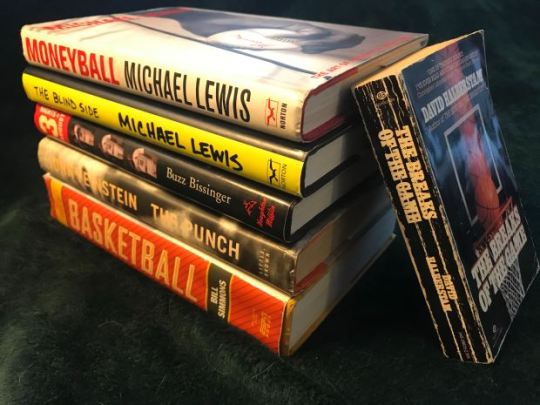
Matt Schubert, The Denver Post
Some of The Denver Post sports department’s favorite books.
“Breaks of the Game,” by David Halberstam (1981) — A Pulitzer Prize winning journalist steps into the chaotic, complicated mess that was the NBA of the late 1970s, when issues of race, labor strife and drug abuse cast a shadow over a struggling league. Halberstam embeds himself with the 1977-78 Portland Trail Blazers, who suffer a tragic fall from grace a year after stunning the Philadelphia 76ers in the 1977 NBA Finals. Aside from the storytelling, what makes this book exceptional are the figures Halberstam captures, including the irascible Maurice Lucas, the enigmatic Bill Walton and the brilliant Dr. Jack Ramsay. Matt Schubert
“Shoeless Joe,” by W. P. Kinsella (1982) — Kinsella weaves a magical tale about baseball, heroes, love and dreams. An Iowa farmer hears a voice: “If you build it, he will come.” The “he” is Shoeless Joe Jackson of the 1919 Chicago Black Sox scandal. The “it” is a baseball stadium carved out of a cornfield. Even if you have seen the movie “Field of Dreams” that was based on Kinsella’s novel, it is worth picking up. The author’s vivid descriptions and wonderful characters (some of whom don’t appear on screen) will transport you to a cornfield in Iowa where dreams do come true. Lori Punko
“Life Its Ownself,” by Dan Jenkins (1984) — The list of sequels that surpass the originals is a short one, but leave it to the late, great, reprobate Jenkins to do just that. “Life Its Ownself” steps into the big shoes of “Semi-Tough” and bursts the outsoles. NFL running back Billy Clyde Puckett tells the story, and I dare anyone to go more than two pages without having to stop to laugh out loud. You could argue that the book didn’t age well, but it remains a superb time capsule of 1980s sports culture — and often a nice piece of wisdom about the title. Mike Judson
“The New Thinking Man’s Guide To Pro Football,” Paul Zimmerman (1984) — Bill Barnwell? Peter King? Dr. Z got there first. Zimmerman wrote about football like the game was Chaucer, and he was the coolest literature professor on the planet. The man timed performances of the national anthem, then wrote a column about it. Like “Ball Four,” many of the universal truths in the “Thinking Man’s Guide” — and some of the B.S. it called out — still ring true. Sean Keeler
“Hajime no Ippo,” George Morikawa (1989-present) — For more than 30 years, this long-running Japanese graphic novel has followed the journey of Makunouchi Ippo and his gradual mastery of the sweet science of boxing. Morikawa blends the intricate dance between opponents inside the ring with a sweet coming-of-age story that happens outside it. Joe Nguyen
“If I Never Get Back” by Darryl Brock (1989) — A baseball writer struggling with his everyday life stumbles while boarding a train en route to cover a game. When he comes to, he discovers he’s a young player boarding a train to join his new team — the Cincinnati Red Stockings — in the summer of 1869. Realizing he’s a mediocre player immersed in the early days of professional baseball, he uses his knowledge of the sport and its history to help his team in other ways. (He invents the bunt and ballpark food.) Along the way, he develops a passion for life and takes advantage of the era — including seeking out Mark Twain. — TJ Hutchinson
“Friday Night Lights,” by Buzz Bissinger (1990) — The town is Odessa, Texas in 1988, the team is Permian High School football and the dream is the glory that winning brings. But there are huge costs. Teenagers’ lives are fulfilled but also shattered, values are compromised and football becomes a false god. As the New York Times book review put it: ” ‘Friday Night Lights’ offers a biting indictment of the sports craziness that grips … most of American society, while at the same time providing a moving evocation of its powerful allure.” Patrick Saunders
“Loose Balls,” by Terry Pluto (1990) — Marvin Barnes. Fly Williams. Wendell Ladner. Slick Leonard. The ABA had more characters than a Warner Brothers cartoon, and Pluto’s first-person, anecdotal collection is a stitch from start to finish. The truth of the nine seasons of the ABA was stranger than Will Ferrell’s fictional “Semi-Pro” film could ever hope to be. And twice as funny, to boot. One of the grandpappies, for better or for worse, of the “oral history” style of sports storytelling. Sean Keeler
“Worst Team Money Could Buy,” by Bob Klapisch (1993) — Devoured this book as a high school student and couldn’t wait to cover pro sports one day. Klapisch, then with the New York Daily News, and Harper, then with the New York Post, chronicled the overpaid/underperforming 1992 New York Mets. In a month-by-month chronicle, the writers inserted vignettes about a day in the life of a baseball writer, being trapped on the tabloid’s back page and catching up with old sources, plus lists of their all-time good guys, bad guys, best cities, etc. Ryan O’Halloran
“The Life of Reilly,” by Rick Reilly (2000) — Ok, so this is definitely a stump for a Colorado native and former Denver Post sportswriter, but the point stands: Reilly owned the back page of Sports Illustrated for over two decades, and this collection of sports columns will make you laugh, cry and feel all sorts of ways about sports. With his signature style and wit, Reilly brings out the important and thoughtful side of sports, with plenty of Colorado players, coaches and stories featured in the book. Kyle Newman
“The Punch,” by John Feinstein (2002) — It would be nearly impossible to compile a list of great sports books without mentioning at least one title from Feinstein’s voluminous catalog. While some may prefer “A Season on the Brink” or “A Good Walk Spoiled,” there’s a human element to “The Punch” that makes it one of his best. Detailing the events surrounding perhaps the most infamous punch in professional sports, Feinstein shows how one event forever altered the lives of the two men involved in it — the L.A. Lakers’ Kermit Washington’s and Houston Rockets’ Rudy Tomjanovich. Matt Schubert
“Moneyball,” by Michael Lewis (2003) — The sabermetrics that are now standard in today’s game were just beginning to make their way into MLB front offices during the 1990s and around the turn of the century. Lewis’ modern-day baseball classic profiles general manager Billy Beane and Oakland as the franchise takes advantage of market inefficiencies to make the low-budget A’s competitive. Kyle Newman
“Positively Fifth Street,” by James McManus (2003) — Gambling. Murder. The mob. This intricately woven tale of Las Vegas and the World Series of Poker takes readers on a wild ride as McManus makes a run to the Main Event final table while also covering the murder trial of Rick Tabish and Sandy Murphy for Harper’s Magazine. Along the way, McManus recounts the history of no-limit Texas Hold’em, the signature game of the WSOP, as well as the story of the Binion family and its patriarch Benny Binion — owner of Binion’s Horseshoe casino, WSOP founder and father of Tabish and Murphy’s alleged victim, Ted Binion. Matt Schubert
“Three Nights in August,” by Buzz Bissinger (2005) — Seen by some as the baseball establishment’s answer to “Moneyball,” this book follows St. Louis Cardinals manager Tony La Russa as he navigates a critical series against the Chicago Cubs in August 2003. Bissinger, who also penned the classic “Friday Night Lights,” takes readers inside the mind of one of baseball’s greatest tacticians as he wrestles with how to manage the Cardinals’ lineup, pitching staff and his own omnipresent demons. Matt Schubert
“Clemente: The Passion and Grace of Baseball’s Last Hero,” by David Maraniss (2006) — This is so much more than a biography of a baseball legend. It explores racism in America, paints a picture of baseball in a changing world and goes beyond the myth of Clemente, who played baseball with “a beautiful fury.” Maraniss’ prose paints Clemente as a true hero, and not just because he died in a plane crash on Dec. 31, 1972, while delivering aid to earthquake victims in Nicaragua at the age of 38. Patrick Saunders
“Game of Shadows,” by Lance Williams and Mark Fainaru-Wada (2006) — The lying. The cheating. The news conferences with athletes professing their innocence and astonishment that a drug test had come back positive. Read “Game of Shadows,” the brilliantly written expose by the reporters who broke the BALCO story, and you’ll lose any illusions about the depth of cheating within professional sports. Decades from now it’ll stand the test of time as the definitive accounting of the steroid era that nearly brought down baseball. Scott Monserud
“The Blind Side,” by Michael Lewis (2006) — Few non-fiction novelists capture a subject quite like Lewis, who’s extensive and eclectic canon of work includes “Moneyball,” “The Big Short” and “Liar’s Poker.” In his foray into football, Lewis examines the historical evolution of the left tackle position as edge rushers like Lawrence Taylor changed the way the game was played. Football luminaries like Bill Walsh, Bill Parcells and Nick Saban all make appearances, as Lewis deftly weaves in the incredible story of Michael Oher, an undiscovered gem who spent his early years living on the streets of Memphis. Matt Schubert
“Pistol: The Life of Pete Maravich,” by Mark Kriegel (2007) — As a teenager, I became fascinated by Maravich but never got to see him play on TV. I had to make do reading stories in Sports Illustrated about an electrifying basketball magician wearing gray, floppy sweat socks and attracting sellout crowds wherever he played. Kriegel’s book is a wonderfully written fast-paced tale of a man who transformed the game he loved but was haunted by demons he could not shake. Scott Monserud
“Arnie & Jack,” by Ian O’Connor (2008) — It would be too easy to list a John Feinstein golf book since I’ve read them all. I went with O’Connor’s book that was released about a decade ago. The cover picture – Arnold Palmer helping Jack Nicklaus line up a putt during a team competition – was a great hook and recapped their battles on the course, but Palmer’s command of the sport’s fans and endorsement opportunities. A great read. Ryan O’Halloran
“The Book of Basketball” by Bill Simmons (2009) — This humorous and thoughtful deep dive into the history of the NBA is essential reading for any hoops head. After giving his thoughts on “the secret” of the game, Simmons delves into how the league got to where it was in 2009 (going all the way back to the days of Mikan) before ranking the greatest teams, champions and players off all time in a witty and exhaustive manner. Sure, Simmons gets a little verbose. And, yes, he goes heavy on a few ham-fisted pop-culture references. But if you care at all about the Association, this is the breeziest 697-page read you can find. Matt Schubert
“Baseball in the Garden of Eden: The Secret History of the Early Game,” by John Thorn (2011) — Written by the official historian of Major League Baseball, Thorn enlightens baseball fans as to the game’s true roots. Who really invented America’s pastime, and who were the movers and shifters in the early stages of a game dominated by gambling? Surprising and informative, even the most studied baseball fans will get plenty out of this piece of history. Kyle Newman
“The Art of Fielding,” Chad Harbach (2011) — This novel is set at a small midwestern college and tells the story of elite shortstop Henry Skrimshander, who is destined to be a first-round pick in the MLB draft before a routine throw derails his life and upends his college experience. The characters are rich and the story engrossing. There’s no need to be a baseball fan to get wrapped into this story, either. Michael Singer
“Unstoppable” by Anthony Robles, 2013 — An incredible biography about Arizona State’s one-legged wrestling champion. Robles, born without his right leg because of a birth defect, became a wrestling icon with his Division I national championship in 2011. The book profiles the courage and strength he summoned throughout his life and athletic journey, going from a scrawny high school wrestler who got dominated to the one doing the dominating at ASU. Kyle Newman
“The Summer of Beer and Whiskey,” by Edward Achorn (2013) — Set in the rough-and-tumble days of 1880s professional baseball, the book profiles the upstart American Association, which appeared poised to challenge the National League for dominance of the sport. Chris Von der Ahe, an eccentric, innovative and fearless German immigrant, takes center stage as the daring owner of the St. Louis Browns and a founder of the American Association. With popularity in baseball waning because of scandals, gambling and thugs that weighed down the sport in the 1870s, Von der Ahe, the Browns and the American Association breathe new life into the sport. And, of course, there are plenty of colorful characters (and lots of boozing ballplayers) along the way. Kyle Newman
“Captain Class,” by Sam Walker (2017) — What makes a sports team great goes beyond X’s and O’s? What makes a great leader in the locker room can be defined, and the answer might surprise you. For what it’s worth: Avs captain Gabe Landeskog uses it as reference book. Mark Kiszla
“Basketball (and other things),” by Shea Serrano (2017) — Have you ever wondered where Air Bud would get selected in a fictional basketball player draft? What about Lola Bunny (Space Jam), Sidney Deane (White Men Can’t Jump) or Will Smith (Fresh Prince)? Of course you haven’t. Serrano answers the basketball questions you didn’t know you needed answers to. We’re talking trivial questions, like which was the most important NBA championship ever, and more pressing questions, such as “If 1997 Karl Malone and a bear swapped places for a season, who would be more successful?” In other words, essential reading. Michael Singer
“Football For A Buck,” by Jeff Pearlman (2018) — The life and times of the USFL … short in terms of life/times (three years), but long on stories about how the fledgling football league lured several top college players, including Jim Kelly, Reggie White and Herschel Walker, to play in the summer. Pearlman’s narrative is equal parts hilarious and informative — tales about travel, tryouts, pay checks, stadiums and our current commander in chief, who wanted to challenge the NFL in the fall and failed miserably. Ryan O’Halloran
“Range,” by David Epstein (2019) — This is not necessarily a sports book, per se, but there are definitely elements that apply. The book begins by comparing Tiger Woods (a specialist) to Roger Federer (who dabbled in skiing, wrestling, swimming, skateboarding, basketball, ping pong and tennis). Epstein makes the convincing argument that dabblers are often better in the long run, be it athletes, musicians, artists or inventors. A compelling book that will make you reconsider the best way to learn. Michael Singer
from News And Updates https://www.denverpost.com/2020/03/27/best-sports-books-reading-list/
0 notes
Link

"Martin has donated to the Bricktown museum the custom-made, Kennedy Center-commissioned banjo he was presented when he won the celebrated Mark Twain Prize in 2005."
Steve Martin donates unique banjo to OKC's American Banjo Museum
JAN 4, 2020 - The banjo, now a part of the museum’s permanent collection, will become the centerpiece of an upcoming exhibit at the American Banjo Museum chronicling Martin's banjo life and contributions.
0 notes
Text
Steve Martin Biography, Age, Weight, Height, Friend, Like, Affairs, Favourite, Birthdate & Other
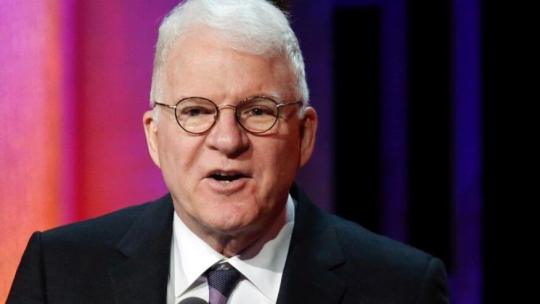
This Biography is about one of the best Writer Steve Martin including his Height, weight, Age & Other Detail…
Biography Of Steve Martin
Real Name
Steve Martin
Profession
Actors, Stand-up Comedians, Writers
Nick Name
Stephen Glenn Martin, Stephen Glenn
Famous as
Comedian
Nationality
American
Personal life of Steve Martin
Born on
14 August 1945
Birthday
14th August
Age
71 Years
Sun Sign
Leo
Born in
Waco
Grouping of People
College Dropouts
Personality Type
ENTJ
City
Texas
Family Background of Steve Martin
Father
Glenn Vernon Martin
Mother
Mary Lee Martin
Siblings
Melinda Martin
Spouses/Partners
Anne Stringfield, Victoria Tennant, Bernadette Peters
Education
Ralston Intermediate, 1963 - Garden Grove High School, Santa Ana College, 1967 - California State University, Long Beach
Net worth
$110 million
Awards
2015 - AFI Life Achievement Award 2013 - Academy Honorary Award 2005 - Mark Twain Prize for American Humor
2007 - Kennedy Center Honors 2014 - Grammy Award for Best American Roots Song - Love Has Come for You 2010 - Grammy Award for Best Bluegrass Album - The Crow 1979; 1978 - Grammy Award for Best Comedy Album - A Wild and Crazy Guy Let's Get Small 1988 - Writers Guild of America Award for Best Adapted Screenplay - Roxanne 1988; 1985 · Roxanne - National Society of Film Critics Award for Best Actor - All of Me 2002 - Grammy Award for Best Country Instrumental Performance - Foggy Mountain Breakdown 1984 - New York Film Critics Circle Award for Best Actor - All of Me 1996 - Outer Critics Circle Award for John Gassner Playwriting Award - Picasso at the Lapin Agile
Personal Fact of Steve Martin
Steve Martin is a multiple award winning American comedian, actor, and writer who first gained notice as a writer for the Smothers Brothers Comedy Hour. He began his career as a stand-up comedian and performed his routines in local clubs. He eventually ventured into television and made his first appearance on The Steve Allen Show following which he also appeared on The Virginia Graham Show. Having made a successful foray into television he achieved much popularity during the mid 1970s and performed in various shows.
He became particularly famous after a guest appearance in NBC's Saturday Night Live (SNL) and was invited to be the show’s guest host 15 times. Steve Martin achieved even greater success with the release of his comedy albums; his album A Wild and Crazy Guy peaked at No. 2 on Billboard's Pop Albums Chart and was accredited double-platinum.
By this time he had garnered a huge fan following, and he realized the time was ripe for him to foray into films. His first substantial film appearance was in a short film, The Absent-Minded Waiter, which earned an Academy Award nomination. In addition to being an actor and a comedian, he is also a musician and is well known for his love for the banjo
This Biography Written By celebstarinfo.com
Read the full article
0 notes
Text
Jesse L. Martin


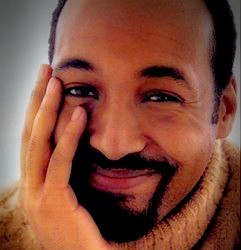



Jesse L. Martin (born Jesse Lamont Watkins; January 18, 1969) is an American actor and singer. He is best known for originating the role of Tom Collins on Broadway in the musical Rent and his television roles as NYPD Detective Ed Green on Law & Order and Detective Joe West on The Flash.
Early life
Martin, the third of four sons, was born in Rocky Mount, Virginia. His father, Jesse Reed Watkins (1943-2003), was a truck driver, and his mother, Virginia Price, a college counselor; the two divorced when he was a child. His mother eventually remarried and Martin adopted his stepfather's surname.
When Martin was in grade school, the family relocated to Buffalo, New York, but Martin began to dislike speaking because of his Southern accent and was often overcome with shyness. A concerned educator and mentor influenced him to join an after-school drama program and cast him as the pastor in The Golden Goose. Being from Virginia, the young Martin played the character the only way he knew how: as an inspired Southern Baptist preacher. The act was a hit, and Martin emerged from his shell. Martin attended high school at The Buffalo Academy for Visual and Performing Arts, where he was voted "Most Talented" in his senior class. He later enrolled in New York University's Tisch School of the Arts' Theatre Program and while at NYU he was also the popular President of Rubin Dorm, the former domain of Mark Twain. He also has a niece named Daisia Martin born by his youngest brother David Martin
Career
After graduation, Martin toured the states with John Houseman's The Acting Company. He appeared in Shakespeare's Rock-in-Roles at the Actors Theatre of Louisville and The Butcher's Daughter at The Cleveland Play House, and returned to Manhattan to perform in local theatre, soap operas, and commercials. Finding that auditions, regional theater, and bit parts were no way to support himself, Martin waited tables at several restaurants around the city. He was literally serving a pizza when his appearance on CBS's Guiding Light aired in the same eatery. While the show aired, the whole waitstaff gathered around the bar television to cheer his performance. Often, during the dinner rush, he broke out in song. When he gave his customers their dinner checks, he told them to "keep it, because someday I'll be famous!"
Martin made his Broadway debut in Timon of Athens, and then performed in The Government Inspector with Lainie Kazan. While employed at the Moondance Diner, he met the playwright Jonathan Larson, who also worked on the restaurant's staff. In 1996, Larson's musical Rent took the theatre world by storm, with Martin in the role of gay computer geek/philosophy professor Tom Collins. The 1990s update of Puccini's La Bohème earned six Drama Desk Awards, five Obie Awards, four Tony Awards, and the Pulitzer Prize. In 1998, the West End production of Rent opened with four of the original cast members, including Martin. He played Tad in the concept album of Bright Lights, Big City.
In 2010, Martin returned to the stage for one of his biggest theater commitments since Law & Order performing in the productions of The Merchant of Venice and The Winter's Tale as a part of The Public Theater's Shakespeare in the Park at the Delacorte Theater in Central Park. He played the roles of Gratiano and King Polixenes, respectively. The two shows were performed in repertory, beginning with previews on June 9, 2010 through to the final performance on August 1, 2010.
The Merchant of Venice later transferred to Broadway to the Broadhurst Theater for a limited engagement, during which time Martin reprised his role as Gratiano. The show began previews on October 19, 2010, and officially opened on November 7. The show began a hiatus on January 9 to accommodate Al Pacino's pre-existing obligations, and resumed from February 1, 2011 to February 20, 2011; Martin did not reprise his role after the hiatus due to other work commitments. He took part in a one-night-only reading benefit of Romeo and Juliet to celebrate the 50th Anniversary of the opening of the Delacorte Theater in Central Park, alongside Meryl Streep, Kevin Kline, Raúl Esparza and others on June 18, 2012.
Television
Martin soon landed roles on Fox's short-lived 413 Hope St. and Eric Bross' independent film Restaurant (1998). Ally McBeal's creator, David E. Kelley, attended Rent's Broadway premiere and remembered Martin when the show needed a new boyfriend for the show's title character. His performance as Dr. Greg Butters on Ally McBeal caught the attention of David Duchovny, who cast Martin as a baseball-playing alien in a 1999 episode of The X-Files titled "The Unnatural" that Duchovny wrote and directed.
While still shooting Ally McBeal, Martin heard rumors that actor Benjamin Bratt planned to leave the cast of Law & Order. Martin had tried out for the show years before and won the minor role of a car-radio thief named Earl the Hamster, but decided to wait for a bigger part. With the opportunity presenting itself, Martin approached Law & Order producer Dick Wolf regarding the opening. Wolf hoped to cast him, and upon hearing that CBS and Fox both offered Martin development deals, he gave the actor the part without an audition.
From 1999 to 2008, he played Detective Edward 'Ed' Green on Law & Order. Altogether, he was the fifth longest-serving cast member; behind S. Epatha Merkerson, Sam Waterston, Jerry Orbach and Steven Hill. He had a brief hiatus at the end of the 2004–2005 season while he was filming the movie adaptation of Rent in which he reprised the role of Tom Collins. Martin's final episode of Law & Order aired April 23, 2008, as he was replaced by Anthony Anderson. Martin returned to NBC a year later, as the co-star of The Philanthropist.
On September 14, 2012, NBC announced that Martin would be joining the cast of SMASH during season 2 for a nine-episode arc as Scott Nichols, the artistic director of the Manhattan Theatre Workshop. Martin has also been cast as one of the leads in an NBC pilot of The Secret Lives of Husbands and Wives as Greg Cooke. It was announced on May 10, 2013, that NBC would not be picking up the pilot.
Martin was cast as Detective West in the pilot for The Flash, a spin-off from Arrow in January 2014. The Flash was picked up for a full 23 episode season by The CW.
Film
On March 4, 2013, it was announced that Martin would replace Lenny Kravitz as Marvin Gaye in an upcoming biopic directed by Julien Temple, and produced by Vassal Benton and Fred Bestall. Martin had been attached to a different Gaye biopic for years and had stated that it was his dream role to portray the legendary Motown singer.
Other work
Martin voiced the character Ed Green in the video game Law & Order: Justice is Served, and narrated the audio book The Fire Next Time by James Baldwin and On the Shoulder of Giants, Volume 2: Master Intellects and Creative Giants by Kareem Abdul-Jabbar. He co-produced the Off-Broadway production of Fully Committed with Rent co-star Adam Pascal (and two other producers).
Martin sits on the board of trustees for the Jonathan Larson Performing Arts Foundation along with Rent co-producer Kevin McCollum.
Personal life
In October 2006, Martin returned to Buffalo, New York to work on an independent film (Buffalo Bushido).
He is a resident of Manhattan.
Stage work
Ring of Men (Off-Broadway) - Unknown date and character
The Prince and the Pauper (Off-Broadway) - Unknown character and date
Arabian Nights (Off-Broadway) - Prince of Fools, Clarinetist, Boy (1994)
The Butcher's Daughter (Cleveland Playhouse) - Unknown character (1993)
Timon of Athens (Broadway Premiere) - "Alcibiades' Officer" (original), "Second Masseur" (original), Alcibiades (understudy) (1993).
The Government Inspector (Broadway Revival) - Abdulin (original), Panteleyeva (understudy) (1994)
Rent (Off-Broadway) - Tom Collins (1996)
Rent (Broadway) - Tom Collins (1996)
Rent (West End) - Tom Collins (1998)
Bright Lights, Big City (musical) (concept recording) - Tad
The Threepenny Opera (Williamstown, MA; Williamstown Theatre Festival Production) – Macheath (2003)
The Merchant of Venice (Shakespeare in the Park) - Gratiano (Summer 2010)
The Winter's Tale (Shakespeare in the Park) - King Polixenes (Summer 2010)
The Merchant of Venice (Broadway) - Gratiano (2010); transfer from the Shakespeare in the Park production
Romeo and Juliet (Public Theater; Delacorte Theatre's 50th Anniversary) - Gregory, Friar John, Watchman 2 (2012)
Wikipedia
4 notes
·
View notes
Text
Worth The Money books
1. The Great Gatsby by F. Scott Fitzgerald
Yes, there is a film with Leonardo DiCaprio, but that doesn’t get you off the hook from reading this perceptive, pitch-perfect novel. Set in the jazzy Roaring Twenties, Fitzgerald’s tale of obsession, ambition, love, money, and a world that would vanish with the Depression was to be his Big Hit — and he was surprised and disappointed when it sold poorly. When Fitzgerald died in 1940, he was an all but forgotten writer. Soon after, there was a revival of his work, and he is now viewed as one of the great American novelists. Today, 500,000 copies of Gatsby are sold each year.
2. To Kill a Mockingbird by Harper Lee
Lee’s famous novel, published in 1960, has sold more than 40 million copies worldwide. For all that it exposes the racial injustice of a particular time and place, it is timeless and universal. As Pulitzer Prize winning journalist Rick Bragg wrote in Reader’s Digest, “Many people see To Kill a Mockingbird as a civil rights novel, but it transcends that issue. It is a novel about right and wrong, about kindness and meanness.”
3. On the Road by Jack Kerouac
Kerouac’s agent spent more than four years trying to find a publisher for this turbo-charged, road-trip novel about the postwar beat generation. Finally published in 1957, On the Road — written in a style at once breathless and disjointed — spoke to the deep restlessness of young people chafing at mainstream Cold War culture.
4. Great Expectations by Charles Dickens
You might’ve been assigned the tale of Pip the ambitious orphan in school. But I promise Great Expectations is more entertaining to read as an adult, because the humor that sailed over over your head will be evident now — and besides, you won’t need to write a paper about it. Dickens, in his time, was as famous as a rock star (or, a Kardashian) because his novels were written as page-turners, with whip-smart observations about ambition and human nature.
5. All Quiet on the Western Front by Erich Marie Remarque
Remarque’s searing war-is-hell novel gave millions of readers their first view of the suffering of ordinary German soldiers and civilians during WW1. All Quiet on the Western Front serves as a reminder of the real people on the other side of any battle.
6. War and Peace by Leo Tolstoy
I know, it’s looong and the Russian names are complicated, but seriously: if you can follow thousands of pages of Game of Thrones and the rest of the Ice and Fire series (which I love, by the way) then you can handle the challenge of one of the greatest novels of all time. War and Peace is set in the years before, during, and after Napoleon’s invasion of Russia. Tolstoy brilliantly chronicles the world of a crumbling aristocracy — on the battlefield, in society, and at home. His research was meticulous, his characters (the soldiers, lovers, seekers) unforgettable.
7. The Heart is a Lonely Hunter by Carson McCullers
McCullers was just 23 years old when her novel about a deaf-mute and the travails of the people he encounters was published. She wasn’t the first to write about people at the margins of society, but in The Heart is a Lonely Hunter, she did so indelibly. Quotable quote: “And how can the dead be truly dead when they still live in the souls of those who are left behind?”.
8. Native Son by Richard Wright
Published in 1940 (as was The Heart is a Lonely Hunter), Wright’s graphic, violent protest novel was an eye-opener about racial tensions and poverty in America. For hundreds of thousands of readers, the story was a conversation starter: Wright’s protagonist Bigger Thomas commits an accidental murder, and spirals downward into more violence and despair. Some schools have tried to ban Native Son, but the novel endures.
9. The Road by Cormac McCarthy
Pulitzer Prize-winning author McCarthy is one of our greatest living prose stylists. His post-apocalyptic novel, The Road, in which a father and young son struggle to survive, is made all the more profound by its brevity. It’s a quick read that stays with you.
10. Frankenstein by Mary Shelley
Shelley was still a teenager when she created the iconic mad scientist and monster. Frankenstein never loses its grip on our imaginations, because the questions it raises about science, ambition, and our humanity remain as urgent as ever.
11. A Good Man Is Hard to Find by Flannery O’Connor
A deeply religious woman, O’Connor wrote about morally flawed characters with humor, compassion, and a razor-sharp mind. She was a master storyteller, as evidenced in her best known and most-loved collection, A Good Man is Hard to Find.
12. The Chronicles of Narnia by C.S. Lewis
Yes, The Chronicles of Narnia are children’s books and no, they don’t age. These complex fantasy novels, which have sold more than 100 million copies worldwide (and clearly influenced, among others, J.K. Rowling), have been praised and criticized for their Christian themes, but there’s a lot more going on here than simple allegory. Read them again. Better yet, find a child to read them to. You’ll be amazed by the richness of storytelling.
13. The Adventures of Huckleberry Finn by Mark Twain
This much-more-grown-up sequel to The Adventures of Tom Sawyer is widely considered to be Mark Twain’s masterpiece. It’s part coming-of-age story, part cross-country adventure, part biting social satire. Twain makes brilliant use of irony as Huck, raised in the pre-Civil War south, gradually comes to understand the evils of slavery.
14. Murder on the Orient Express by Agatha Christie
When a rich American businessman is killed on a train, it’s up to detective Hercule Poirot to figure out which of the passengers is responsible. Published in 1934, Murder on the Orient Express’s conclusion still stuns readers.
15. Of Mice and Men by John Steinbeck
Few authors have captured the essence of Depression-era America with more raw emotion than John Steinbeck. Of Mice and Men follows two farm hands looking for work: the protective and sharp-witted George and the disabled but big-hearted Lennie, who doesn’t know his own strength. The two men learn that even the simplest of American dreams are often out of reach before the tale comes to a heartbreaking end. James Franco and Chris O’Dowd starred in a 2014 Broadway adaptation. Though short, this novel packs a serious emotional punch.
16. The Odyssey by Homer
OK, so this one’s technically an epic poem, not a book, but I think it still counts. As an epic poem, The Odyssey was recited, or sung, for years and years before it was written down. It tells the (fictional) story of Ancient Greek war hero Odysseus’s perilous 20-year journey home from the battlefield. He outsmarts a Cyclops, chats with dead people, and endures the repeated wrath of a seriously angry sea god before finally arriving home. The second-oldest known work of Western literature has stood the test of time.
17. The Da Vinci Code by Dan Brown
This fictional, but meticulously researched thriller will make you wish you paid more attention in art class. A murder at the Louvre museum leads symbologist Robert Langdon on a high-stakes treasure hunt through Europe with the police on his tail. It’s got just the right mix of page-turning action and brain-teasing historical information. This is one book that is way better than its movie adaptation. The Da Vinci Code’s mind-bending “what if” questions will stay with you long after you put it down.
18. Pride and Prejudice by Jane Austen
Generations of readers have fallen in love with Elizabeth Bennet. Pride and Prejudice’s delightful heroine chooses to marry for love rather than money and isn’t afraid to put an arrogant suitor in his place. With the novel itself still a staple of many an English class, the story also lives on through its many — and very diverse — spinoffs. These include the true-to-the-novel 2005 film starring Keira Knightley, the rom-com Bridget Jones’s Diary, the fun web series The Lizzie Bennet Diaries, and even the satirical paranormal adaptation Pride and Prejudice and Zombies.
1 note
·
View note
Photo

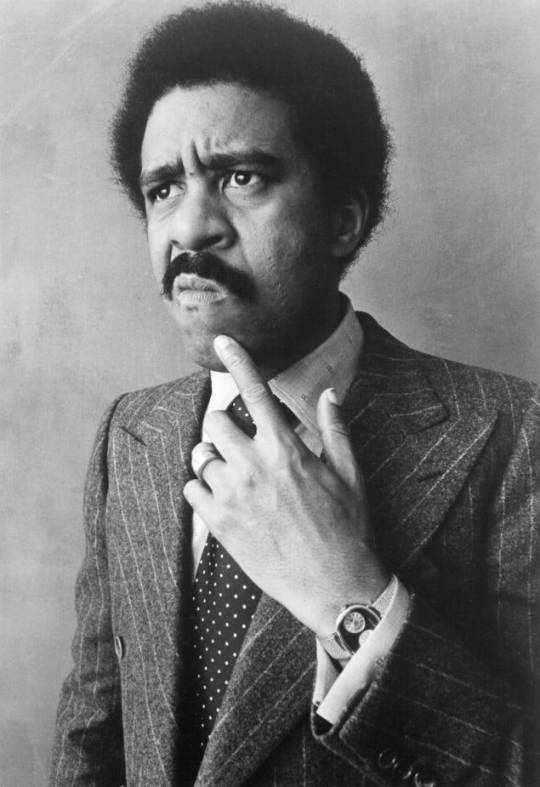

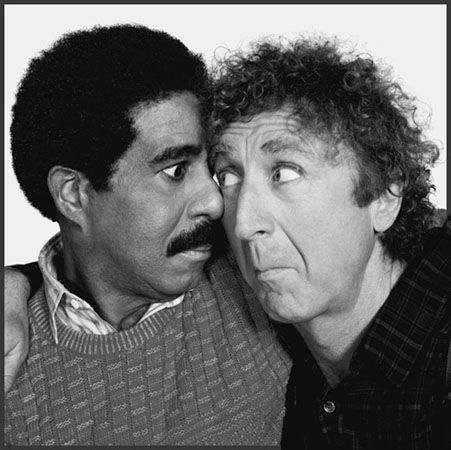



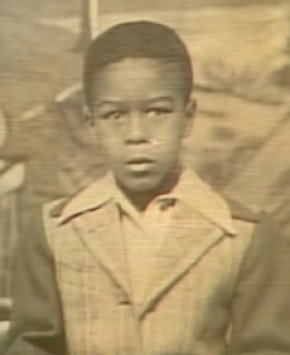
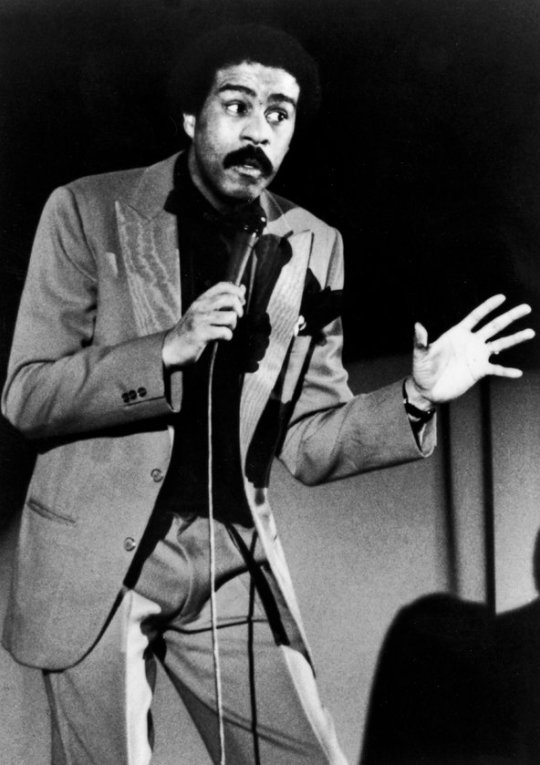

Arrivals & Departures
01 December 1940 – 10 December 2005
Richard Franklin Lennox Thomas Pryor
Richard Franklin Lennox Thomas Pryor was an American stand-up comedian, actor, and writer. He reached a broad audience with his trenchant observations and storytelling style, and is widely regarded as one of the greatest and most influential stand-up comedians of all time.
Pryor's body of work includes the concert movies and recordings: Richard Pryor: Live & Smokin' (1971), That Nigger's Crazy (1974), ...Is It Something I Said? (1975), Bicentennial Nigger (1976), Richard Pryor: Live in Concert (1979), Richard Pryor: Live on the Sunset Strip (1982), and Richard Pryor: Here and Now (1983). As an actor, he starred mainly in comedies such as Silver Streak (1976), but occasionally in dramas, including Paul Schrader's Blue Collar (1978), or action films, like Superman III (1983). He collaborated on many projects with actor Gene Wilder. Another frequent collaborator was actor/comedian/writer Paul Mooney.
Pryor won an Emmy Award (1973) and five Grammy Awards (1974, 1975, 1976, 1981, and 1982). In 1974, he also won two American Academy of Humor awards and the Writers Guild of America Award. The first-ever Kennedy Center Mark Twain Prize for American Humor was presented to him in 1998. He was listed at number one on Comedy Central's list of all-time greatest stand-up comedians. In 2017, Rolling Stone ranked him first on its list of the 50 best stand-up comics of all time.
1 note
·
View note
Text
Neil Simon, Broadway's master of comedy, dies at 91
New Post has been published on https://funnythingshere.xyz/neil-simon-broadways-master-of-comedy-dies-at-91/
Neil Simon, Broadway's master of comedy, dies at 91
NEW YORK (AP) — Playwright Neil Simon, a master of comedy whose laugh-filled hits such as “The Odd Couple,” ”Barefoot in the Park” and his “Brighton Beach” trilogy dominated Broadway for decades, has died. He was 91.
Simon died early Sunday of complications from pneumonia at New York Presbyterian Hospital in Manhattan, said Bill Evans, a longtime friend and spokesman for Shubert Organization theaters.
In the second half of the 20th century, Simon was the American theater’s most successful and prolific playwright, often chronicling middle class issues and fears. Starting with “Come Blow Your Horn” in 1961 and continuing into the next century, he rarely stopped working on a new play or musical. His list of credits is staggering.
The theater world quickly mourned his death , including Tony Award-winning actor and playwright Harvey Fierstein, who tweeted that Simon “could write a joke that would make you laugh, define the character, the situation, and even the world’s problems.”
Matthew Broderick, who in 1983 made his Broadway debut in Simon’s “Brighton Beach Memoirs” and his movie debut in Simon’s “Max Dugan Returns,” added: “I owe him a career. The theater has lost a brilliantly funny, unthinkably wonderful writer. And even after all this time, I feel I have lost a mentor, a father figure, a deep influence in my life and work.”
For seven months in 1967, he had four productions running at the same time on Broadway: “Barefoot in the Park,” ”The Odd Couple,” ”Sweet Charity,” and “The Star-Spangled Girl.”
Even before he launched his theater career, he made history as one of the famed stable of writers for comedian Sid Caesar that also included Woody Allen, Mel Brooks and Carl Reiner.
Simon was the recipient of four Tony Awards, the Pulitzer Prize, the Kennedy Center honors (1995), four Writers Guild of America Awards and an American Comedy Awards Lifetime Achievement honor. In 1983, he had a Broadway theater named after him when the Alvin was rechristened the Neil Simon Theatre.
In 2006, he won the Mark Twain Prize for American Humor, which honors work that draws from the American experience. The previous year had seen a popular revival of “The Odd Couple,” reuniting Nathan Lane and Matthew Broderick after their enormous success in “The Producers” several years earlier.
In a 1997 interview with The Washington Post, Simon reflected on his success: “I know that I have reached the pinnacle of rewards. There’s no more money anyone can pay me that I need. There are no awards they can give me that I haven’t won. I have no reason to write another play except that I am alive and I like to do it,” he said.
Simon had a rare stumble in the fall of 2009, when a Broadway revival of his “Brighton Beach Memoirs” closed abruptly after only nine performances because of poor ticket sales. It was to have run in repertory with Simon’s “Broadway Bound,” which was also canceled.
The bespectacled, mild-looking Simon (described in a New York Times magazine profile as looking like an accountant or librarian who dressed “just this side of drab”) was a relentless writer — and rewriter.
“I am most alive and most fulfilled sitting alone in a room, hoping that those words forming on the paper in the Smith-Corona will be the first perfect play ever written in a single draft,” Simon wrote in the introduction to one of the many anthologies of his plays.
He was a meticulous joke smith, peppering his plays, especially the early ones, with comic one-liners and humorous situations that critics said sometimes came at the expense of character and believability. No matter. For much of his career, audiences embraced his work, which often focused on middle-class, urban life, many of the plots drawn from his own personal experience.
“I don’t write social and political plays because I’ve always thought the family was the microcosm of what goes on in the world,” he told The Paris Review in 1992.
Simon received his first Tony Award in 1965 as best author — a category now discontinued — for “The Odd Couple,” although the comedy lost the best-play prize to Frank D. Gilroy’s “The Subject Was Roses.” He won a best-play Tony 20 years later for “Biloxi Blues.” In 1991, “Lost in Yonkers” received both the Tony and the Pulitzer Prize. And there was a special achievement Tony, too, in 1975.
Simon’s own life figured most prominently in what became known as his “Brighton Beach” trilogy — “Brighton Beach Memoirs,” ”Biloxi Blues” and “Broadway Bound” — which many consider his finest works. In them, Simon’s alter ego, Eugene Morris Jerome, makes his way from childhood to the U.S. Army to finally, on the verge of adulthood, a budding career as a writer.
Simon was born Marvin Neil Simon in New York and was raised in the Bronx and Washington Heights. He was a Depression-era child, his father, Irving, a garment-industry salesman. He was raised mostly by his strong-willed mother, Mamie, and mentored by his older brother, Danny, who nicknamed his younger sibling, Doc.
Simon attended New York University and the University of Colorado. After serving in the military in 1945 and 1946, he began writing with his brother for radio in 1948, and then for television, a period in their lives chronicled in Simon’s 1993 play, “Laughter on the 23rd Floor.”
The brothers wrote for such classic 1950s television series as “Your Show of Shows,” 90 minutes of live, original comedy starring Caesar and Imogene Coca, and later for “The Phil Silvers Show,” in which the popular comedian portrayed the conniving Army Sgt. Ernie Bilko.
Yet Simon grew dissatisfied with television writing and the network restrictions that accompanied it. Out of his frustration came “Come Blow Your Horn,” which starred Hal March and Warren Berlinger as two brothers (not unlike Danny and Neil Simon) trying to figure out what to do with their lives. The comedy ran for more than a year on Broadway. An audience member is said to have died on opening night.
But it was his second play, “Barefoot in the Park,” that really put Simon on the map. Critically well-received, the 1963 comedy, directed by Mike Nichols, concerned the tribulations of a pair of newlyweds played by Elizabeth Ashley and Robert Redford, who lived on the top floor of a New York brownstone.
Simon cemented that success two years later with “The Odd Couple,” a comedy about bickering roommates: Oscar, a gruff, slovenly sportswriter, and Felix, a neat, fussy photographer. Walter Matthau, as Oscar, and Art Carney, as Felix, starred on Broadway, with Matthau and Jack Lemmon playing the roles in a successful movie version. Jack Klugman and Tony Randall appeared in the TV series, which ran on ABC from 1970-1975. A female stage version was done on Broadway in 1985 with Rita Moreno as Olive (Oscar) and Sally Struthers as Florence (Felix). It was revived again as a TV series from 2015-17, starring Matthew Perry.
The play remains one of Simon’s most durable and popular works. Nathan Lane as Oscar and Matthew Broderick as Felix starred in a revival that was one of the biggest hits of the 2005-2006 Broadway season.
Besides “Sweet Charity” (1966), which starred Gwen Verdon as a goodhearted dance-hall hostess, and “Promises, Promises” (1968), based on Billy Wilder’s film “The Apartment,” Simon wrote the books for several other musicals.
“Little Me” (1962), adapted from Patrick Dennis’ best-selling spoof of show-biz autobiographies, featured a hardworking Sid Caesar in seven different roles. “They’re Playing Our Song” (1979), which had music by Marvin Hamlisch and lyrics by Carole Bayer Sager, ran for more than two years. But a musical version of Simon’s movie “The Goodbye Girl,” starring Martin Short and Bernadette Peters, had only a short run in 1993.
Many of his plays were turned into films as well. Besides “The Odd Couple,” he wrote the screenplays for movie versions of “Barefoot in the Park,” ”The Sunshine Boys,” ”The Prisoner of Second Avenue” and more.
Simon also wrote original screenplays, the best known being “The Goodbye Girl,” starring Richard Dreyfuss as a struggling actor, and “The Heartbreak Kid,” which featured Charles Grodin as a recently married man, lusting to drop his new wife for a blonde goddess played by Cybill Shepherd.
In his later years, Simon had more difficulty on Broadway. After the success of “Lost in Yonkers,” which starred Mercedes Ruehl as a gentle, simple-minded woman controlled by her domineering mother (Irene Worth), the playwright had a string of financially unsuccessful plays including “Jake’s Women,” ”Laughter on the 23rd Floor” and “Proposals.” Simon even went off-Broadway with “London Suite” in 1995 but it didn’t run long either.
“The Dinner Party,” a comedy set in Paris about husbands and ex-wives, was a modest hit in 2000, primarily because of the box-office strength of its two stars, Henry Winkler and John Ritter. A hit revival of “Promises, Promises” in 2010 starred Kristin Chenoweth and Sean Hayes.
Perhaps Simon’s most infamous production was the critically panned “Rose’s Dilemma,” which opened at off-Broadway’s nonprofit Manhattan Theatre Club in December 2003. Its star, Mary Tyler Moore, walked out of the show during preview performances after receiving a note from the playwright criticizing her performance. Moore was replaced by her understudy.
He wrote two memoirs, “Rewrites” (1996) and “The Play Goes On” (1999). They were combined into “Neil Simon’s Memoirs.”
Simon was married five times, twice to the same woman. His first wife, Joan Baim, died of cancer in 1973, after 20 years of marriage. They had two daughters, Ellen and Nancy, who survive him. Simon dealt with her death in “Chapter Two” (1977), telling the story of a widower who starts anew.
The playwright then married actress Marsha Mason, who had appeared in his stage comedy “The Good Doctor” and who went on to star in several films written by Simon including “The Goodbye Girl,” ”The Cheap Detective,” ”Chapter Two,” ”Only When I Laugh” and “Max Dugan Returns.” They divorced in 1982.
The playwright was married to his third wife, Diane Lander, twice — once in 1987-1988 and again in 1990-1998. Simon adopted Lander’s daughter, Bryn, from a previous marriage. Simon married his fourth wife, actress Elaine Joyce, in 1999. He also is survived by three grandchildren and one great-grandson.
“I suspect I shall keep on writing in a vain search for that perfect play. I hope I will keep my equilibrium and sense of humor when I’m told I haven’t achieved it,” Simon once said about his voluminous output of work. “At any rate, the trip has been wonderful. As George and Ira Gershwin said, ‘They Can’t Take That Away From Me.’”
(Copyright (c) 2018 Sunbeam Television. The Associated Press contributed to this report. All Rights Reserved. This material may not be published, broadcast, rewritten, or redistributed.)
Source: https://whdh.com/entertainment/neil-simon-broadways-master-of-comedy-dies-at-91/
0 notes
Text
Neil Simon, Broadway Playwright, Dies At 91
New Post has been published on https://latestnews2018.com/neil-simon-broadway-playwright-dies-at-91/
Neil Simon, Broadway Playwright, Dies At 91
By MARK KENNEDY, AP Entertainment Writer
NEW YORK (AP) — Playwright Neil Simon, a master of comedy whose laugh-filled hits such as “The Odd Couple,” ″Barefoot in the Park” and his “Brighton Beach” trilogy dominated Broadway for decades, has died. He was 91.
Simon died early Sunday of complications from pneumonia surrounded by family at New York Presbyterian Hospital in Manhattan, said Bill Evans, his longtime friend and the Shubert Organization director of media relations.
In the second half of the 20th century, Simon was one of the American theater’s most successful and prolific playwrights, often chronicling middle class issues and fears.
Starting with “Come Blow Your Horn” in 1961 and continuing into the next century, he rarely stopped working on a new play or musical. His list of credits is staggering.
Simon’s stage successes included “The Prisoner of Second Avenue,” ″Last of the Red Hot Lovers,” ″The Sunshine Boys,” ″Plaza Suite,” ″Chapter Two,” ″Sweet Charity” and “Promises, Promises,” but there were other plays and musicals, too, more than 30 in all. Many of his plays were adapted into movies and one, “The Odd Couple,” even became a popular television series.
For seven months in 1967, he had four productions running at the same time on Broadway: “Barefoot in the Park”; “The Odd Couple”; “Sweet Charity”; and “The Star-Spangled Girl.”
Even before he launched his theater career, he made history as one of the famed stable of writers for comedian Sid Caesar that also included Woody Allen, Mel Brooks and Carl Reiner.
Simon was the recipient of four Tony Awards, the Pulitzer Prize, the Kennedy Center honors (1995), four Writers Guild of America Awards, an American Comedy Awards Lifetime Achievement honor and, in 1983, he even had a Broadway theater named after him when the Alvin was rechristened the Neil Simon Theatre.
In 2006, he won the Mark Twain Prize for American Humor, which honors work that draws from the American experience. The previous year had seen a popular revival of “The Odd Couple,” reuniting Nathan Lane and Matthew Broderick after their enormous success in “The Producers” several years earlier.
In a 1997 interview with The Washington Post, Simon reflected on his success. “I know that I have reached the pinnacle of rewards. There’s no more money anyone can pay me that I need. There are no awards they can give me that I haven’t won. I have no reason to write another play except that I am alive and I like to do it,” he said.
Simon had a rare stumble in the fall of 2009, however, when a Broadway revival of his “Brighton Beach Memoirs” closed abruptly after only nine performances because of poor ticket sales. It was to have run in repertory with Simon’s “Broadway Bound,” which was also canceled.
The bespectacled, mild-looking Simon (described in a New York Times magazine profile as looking like an accountant or librarian who dressed “just this side of drab”) was a relentless writer — and rewriter.
“I am most alive and most fulfilled sitting alone in a room, hoping that those words forming on the paper in the Smith-Corona will be the first perfect play ever written in a single draft,” Simon wrote in the introduction to one of the many anthologies of his plays.
He was a meticulous joke smith, peppering his plays, especially the early ones, with comic one-liners and humorous situations that critics said sometimes came at the expense of character and believability. No matter. For much of his career, audiences embraced his work, which often focused on middle-class, urban life, many of the plots drawn from his own personal experience.
“I don’t write social and political plays, because I’ve always thought the family was the microcosm of what goes on in the world,” he told The Paris Review in 1992.
Simon received his first Tony Award in 1965 as best author — a category now discontinued — for “The Odd Couple,” although the comedy lost the best-play prize to Frank D. Gilroy’s “The Subject Was Roses.” He won a best-play Tony 20 years later for “Biloxi Blues.” In 1991, “Lost in Yonkers” received both the Tony and the Pulitzer Prize. And there was a special achievement Tony, too, in 1975.
Simon’s own life figured most prominently in what became known as his “Brighton Beach” trilogy — “Brighton Beach Memoirs,” ″Biloxi Blues” and “Broadway Bound” — which many consider his finest works. In them, Simon’s alter ego, Eugene Morris Jerome, makes his way from childhood to the U.S. Army to finally, on the verge of adulthood, a budding career as a writer.
Simon was born Marvin Neil Simon in New York and was raised in the Bronx and Washington Heights. He was a Depression-era child, his father, Irving, a garment-industry salesman. He was raised mostly by his strong-willed mother, Mamie, and mentored by his older brother, Danny, who nicknamed his younger sibling, Doc.
Simon attended New York University and the University of Colorado. After serving in the military in 1945-46, he began writing with his brother for radio in 1948 and then, for television, a period in their lives chronicled in Simon’s 1993 play, “Laughter on the 23rd Floor.”
The brothers wrote for such classic 1950s television series as “Your Show of Shows,” 90 minutes of live, original comedy starring Caesar and Imogene Coca, and later for “The Phil Silvers Show,” in which the popular comedian portrayed the conniving Army Sgt. Ernie Bilko.
Yet Simon grew dissatisfied with television writing and the network restrictions that accompanied it. Out of his frustration came “Come Blow Your Horn,” which starred Hal March and Warren Berlinger as two brothers (not unlike Danny and Neil Simon) trying to figure out what to do with their lives. The comedy ran for more than a year on Broadway. An audience member is said to have died on opening night.
But it was his second play, “Barefoot in the Park,” that really put Simon on the map. Critically well-received, the 1963 comedy, directed by Mike Nichols, concerned the tribulations of a pair of newlyweds, played by Elizabeth Ashley and Robert Redford, who lived on the top floor of a New York brownstone.
Simon cemented that success two years later with “The Odd Couple,” a comedy about bickering roommates: Oscar, a gruff, slovenly sportswriter, and Felix, a neat, fussy photographer. Walter Matthau, as Oscar, and Art Carney, as Felix, starred on Broadway, with Matthau and Jack Lemmon playing the roles in a successful movie version. Jack Klugman and Tony Randall appeared in the TV series, which ran on ABC from 1970-1975. A female stage version was done on Broadway in 1985 with Rita Moreno as Olive (Oscar) and Sally Struthers as Florence (Felix). It was revived again as a TV series from 2015-17, starring Matthew Perry.
The play remains one of Simon’s most durable and popular works. Nathan Lane as Oscar and Matthew Broderick as Felix starred in a revival that was one of the biggest hits of the 2005-2006 Broadway season.
Besides “Sweet Charity” (1966), which starred Gwen Verdon as a goodhearted dance-hall hostess, and “Promises, Promises” (1968), based on Billy Wilder’s film “The Apartment,” Simon wrote the books for several other musicals.
“Little Me” (1962), adapted from Patrick Dennis’ best-selling spoof of show-biz autobiographies, featured a hardworking Sid Caesar in seven different roles. “They’re Playing Our Song” (1979), which had music by Marvin Hamlisch and lyrics by Carole Bayer Sager, ran for more than two years. But a musical version of Simon’s movie “The Goodbye Girl,” starring Martin Short and Bernadette Peters, had only a short run in 1993.
Many of his plays were turned into films as well. Besides “The Odd Couple,” he wrote the screenplays for movie versions of “Barefoot in the Park,” ″The Sunshine Boys,” ″The Prisoner of Second Avenue” and more.
Simon also wrote original screenplays, the best known being “The Goodbye Girl,” starring Richard Dreyfuss as a struggling actor, and “The Heartbreak Kid,” which featured Charles Grodin as a recently married man, lusting to drop his new wife for a blonde goddess played by Cybill Shepherd.
In his later years, Simon had more difficulty on Broadway. After the success of “Lost in Yonkers,” which starred Mercedes Ruehl as a gentle, simple-minded woman controlled by her domineering mother (Irene Worth), the playwright had a string of financially unsuccessful plays including “Jake’s Women,” ″Laughter on the 23rd Floor” and “Proposals.” Simon even went off-Broadway with “London Suite” in 1995 but it didn’t run long either.
“The Dinner Party,” a comedy set in Paris about husbands and ex-wives, was a modest hit in 2000, primarily because of the box-office strength of its two stars, Henry Winkler and John Ritter. A hit revival of “Promises, Promises” in 2010 starred Kristin Chenoweth and Sean Hayes.
Perhaps Simon’s most infamous production was the critically panned “Rose’s Dilemma,” which opened at off-Broadway’s nonprofit Manhattan Theatre Club in December 2003. Its star, Mary Tyler Moore, walked out of the show during preview performances after receiving a note from the playwright criticizing her performance. Moore was replaced by her understudy.
He wrote two memoirs, “Rewrites” (1996) and “The Play Goes On” (1999). They were combined into “Neil Simon’s Memoirs.”
Simon was married five times, twice to the same woman. His first wife, Joan Baim, died of cancer in 1973, after 20 years of marriage. They had two daughters, Ellen and Nancy, who survive him. Simon dealt with her death in “Chapter Two” (1977), telling the story of a widower who starts anew.
The playwright then married actress Marsha Mason, who had appeared in his stage comedy “The Good Doctor” and who went on to star in several films written by Simon including “The Goodbye Girl,” ″The Cheap Detective,” ″Chapter Two,” ″Only When I Laugh” and “Max Dugan Returns.” They were divorced in 1982.
The playwright was married to his third wife, Diane Lander, twice — once in 1987-1988 and again in 1990-1998. Simon adopted Lander’s daughter, Bryn, from a previous marriage. Simon married his fourth wife, actress Elaine Joyce, in 1999. He also survived by three grandchildren; and one great-grandson.
“I suspect I shall keep on writing in a vain search for that perfect play. I hope I will keep my equilibrium and sense of humor when I’m told I haven’t achieved it,” Simon once said about his voluminous output of work. “At any rate, the trip has been wonderful. As George and Ira Gershwin said, ‘They Can’t Take That Away From Me.’”
Mark Kennedy is at http://twitter.com/KennedyTwits
http://platform.twitter.com/widgets.js
!function(f,b,e,v,n,t,s)if(f.fbq)return;n=f.fbq=function()n.callMethod?
n.callMethod.apply(n,arguments):n.queue.push(arguments);if(!f._fbq)f._fbq=n;
n.push=n;n.loaded=!0;n.version=’2.0′;n.queue=[];t=b.createElement(e);t.async=!0;
t.src=v;s=b.getElementsByTagName(e)[0];
s.parentNode.insertBefore(t,s)(window,document,’script’,’https://connect.facebook.net/en_US/fbevents.js’);
fbq(‘init’, ‘1621685564716533’); // Edition specific
fbq(‘init’, ‘1043018625788392’); // Partner Studio
fbq(‘track’, “PageView”);
fbq(‘track’, ‘ViewContent’, “content_name”:”Neil Simon, Broadway Playwright, Dies At 91″,”content_category”:”us.hpmgent” );
fbq(‘trackCustom’, ‘EntryPage’, “section_name”:”Entertainment”,”tags”:[“@ap”,”@health_depression”,”@health_adhd”,”@health_models”,”@health_erectile”,”@health_ibs”,”arts-and-entertainment”,”celebrities”,”media”,”pulitzer-prize”,”humanities”,”tony-award”,”performing-arts”,”barefoot-in-the-park”,”neil-simon”],”team”:”us_huffpost_now”,”ncid”:null,”environment”:”desktop”,”render_type”:”web” );
waitForGlobal(function()
return HP.modules.Tracky;
, function()
/* TODO do we still want this?
$(‘body’).on(‘click’, function(event)
HP.modules.Tracky.reportClick(event, function(data)
fbq(‘trackCustom’, “Click”, data);
);
);
*/
);
0 notes